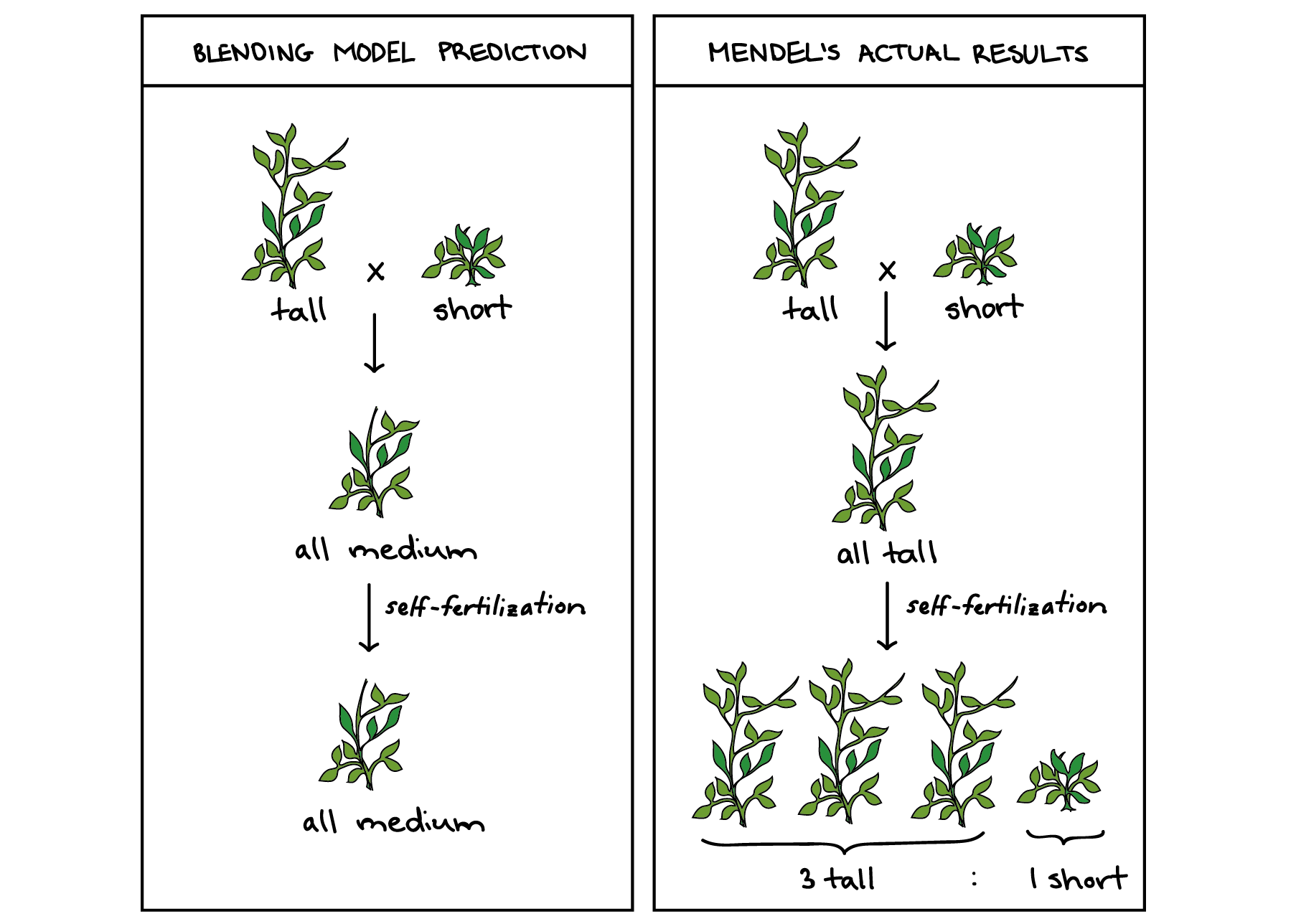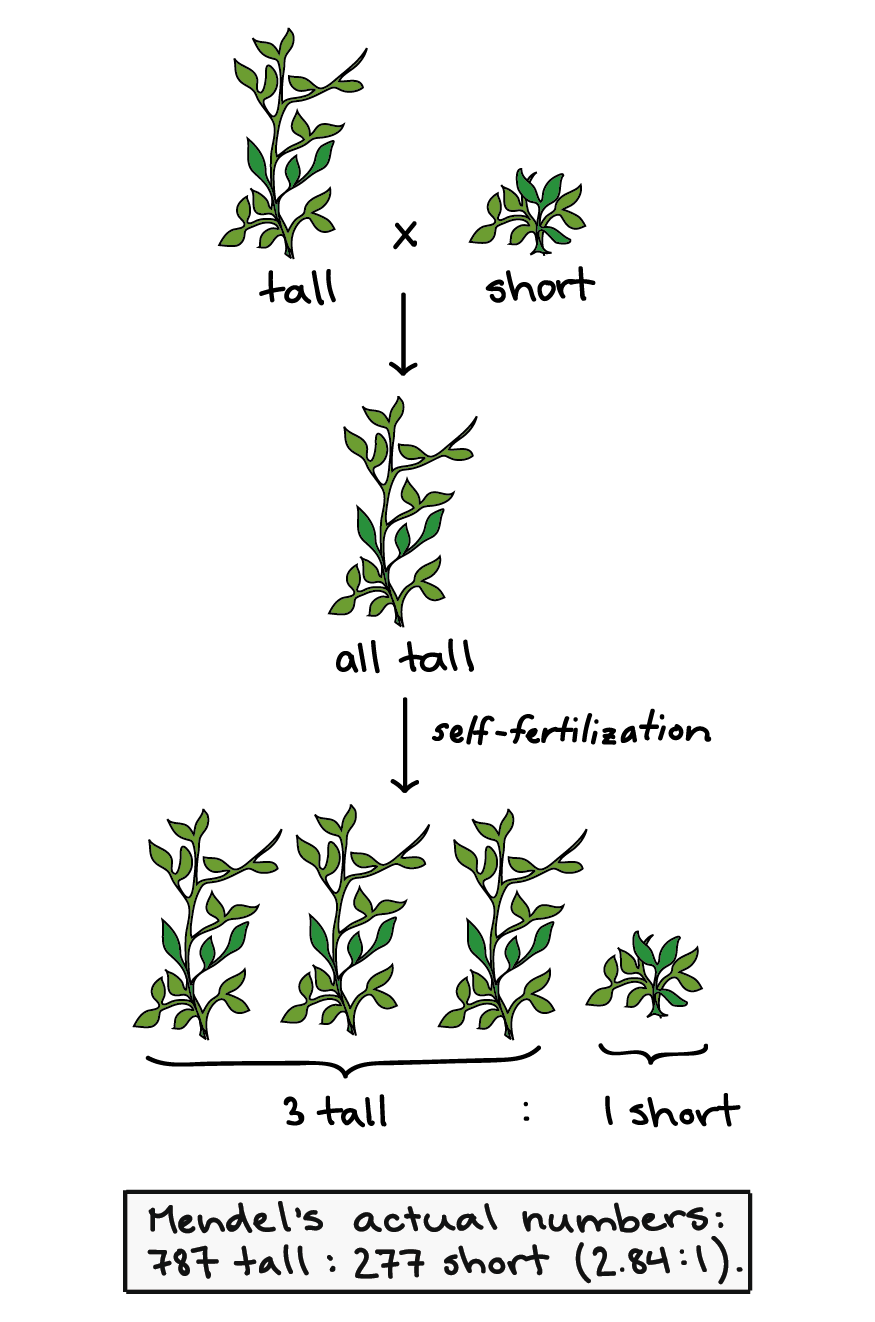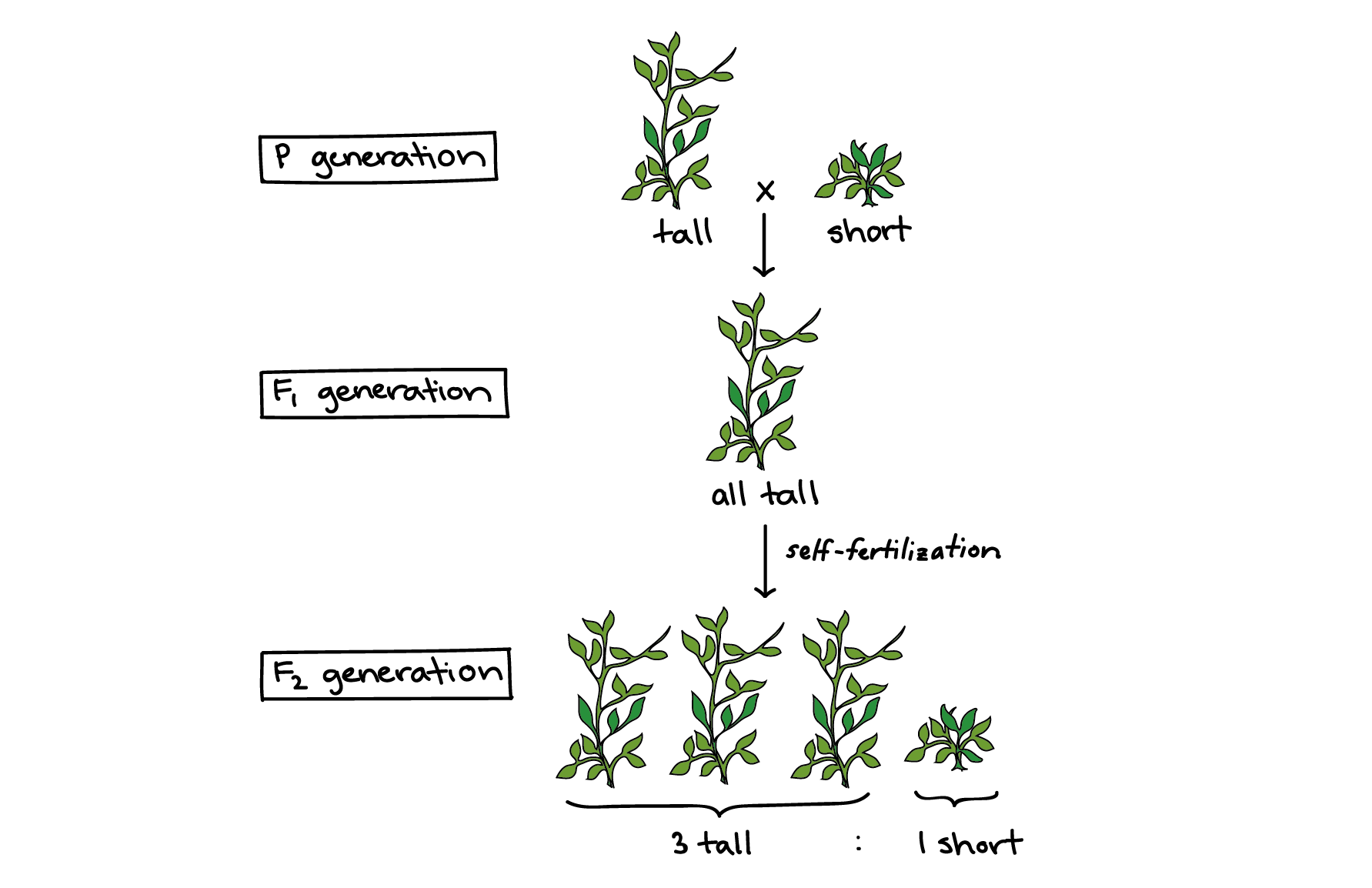Mendels success is in part also attributed to his choice of material. A Reason for the selection of pea plants for the genetic experiments.

Mendel And His Peas Article Heredity Khan Academy
Mendel choose pea plants for his experiments because of the following reasons.

. Mendels Three Laws of Inheritance Mendels research produced three laws of inheritance that are true today. He performed breeding experiments using pea plants to investigate hereditary traits. MENDELS GENETIC LAWS Once upon a time 1860s in an Austrian monastery there lived a monk named Mendel Gregor Mendel.
Mendels work was not widely recognized until after his death in 1884. Mendel was a 19th-century monk who conducted experiments on pea plants to study how traits are passed down between generations. Mendel is known as the father of modern genetic because of genetic experiments with Pea or Pisum Sativum.
In 1865 Mendel presented the results of his experiments with nearly. In biology classes we learn that Gregor Mendels experiments breeding pea plants in the mid-19th century taught us that inherited traits are. Mendel published his findings in 1866 but his discoveries were ignored till 1900 when a number of researchers independently rediscovered Mendels work and grasped its significance.
In the pea which is naturally self-pollinating this is done by manually transferring pollen from the anther of a mature pea plant of one variety to the stigma of a separate mature pea plant of the second variety. Gregor Mendel is considered as the Father of Genetics. When Mendel studied the color of the flowers on the pea plants purple or white he saw the same effect.
Firstly he ensured that each type bred true eg. It is an easily growing naturally self fertilising plant. Mendel experimented on a pea plant and considered 7 main contrasting traits in the plants.
Iii The different physical characteristics were easy to recognize and study. In 1856 Mendel began a series of experiments at the monastery to find out how traits are passed from generation to generation. Studying traits in peas.
It shows pairs of contrasting. He studied the inheritance of seven different morphologically traits on pea plants. 1851 Gregor Mendel referred to as the father of genetics.
Easy to grow in the garden. 11 offers certain advantages. Ii They are self-pollinating and thus self and cross-pollination can easily be performed.
A brief explanation of the two experiments is given below. He combined his knowledge in science and mathematics and observed the. The reason for the selection of pea plants for the genetic experiments are.
Each of these seven traits had two contrasting characteristics such as green seed color or yellow seed color. Only tall plants yield tall plants. Mendel wanted to investigate the inheritance of traits.
Mendel conducted hybridization experiments on garden pea. Mendel studied numerous other pea plant traits such as seed shape seed color flower color pod shape pod color and the position of the pods. Once he had these purebred seeds he mated the two opposing traits for each characteristic.
Useful features of peas include their rapid life cycle and the production of lots and lots of seeds. Mendel specifically chose pea plants for his experiments for several reasons. The garden pea Pisum sativum used in his experiments Fig.
Mendel collected the seeds produced by the P plants that resulted from each cross. In 1856 he began a decade-long research pursuit involving inheritance patterns in honeybees and plants ultimately settling on pea plants as his primary model system a system with convenient characteristics that is used to study a specific biological phenomenon to gain understanding to be applied to other systems. I The flowers of this plant are bisexual.
Mendel studied seven different traits of pea plants. In 1856 he began a decade-long research pursuit involving inheritance patterns in honeybees and plants ultimately settling on pea plants as his primary model system a system with convenient characteristics that is used to study a specific biological phenomenon to gain understanding to be applied to other systems. He was an Austrian biologist scientist and is popular for his garden pea experiment and his laws of inheritance.
Since pea plants self. Plants used in first-generation crosses were called P or parental generation plants. Then he conducted both the experiments to determine the aforementioned inheritance laws.
In 1865 Mendel presented the results of his experiments with nearly. Mendel studied inheritance in peas Pisum sativum. Modern genetics begins with the work of Gregor Mendel an Austrian monk whose breeding experiments with garden peas led him to formulate the basic laws of heredity.
He chose peas because they had been used for similar studies are easy to grow and. Pea plants are easy to grow and mature quickly. See answer 1 Best Answer.
At the time it was thought that parents traits were blended together in their progeny. He used pea plants for 2 main factors. Outline how Mendels experiments showed there were dominant traits and recessive traits in pea plants identify the laws that Mendel wrote following his experiments as the law of dominance the law of independent assortment and the law of segregation use genetic crosses and diagrams to determine dominant and recessive traits and simple phenotypic ratios.
Mendel chose pea plants as his specimen to study as they exhibit distinctive traits that could be easily observed from one generation to the next eg. By Lakshmi Jay Published February 2 2021. It is well suited for artificial cross pollination therefore hybridisation crossing of two different varieties is easily accomplished.
The color of the flowers did not blend together. Mendel is known for pea-plant experiments and subsequent theories on genetics. Gregor Mendel is regarded as the Father of modern genetics.
Pea plants are very rare so Mendel knew no one else was doing these experiments. Pea plants make a convenient system for studies of inheritance and they are still studied by some geneticists today. Monks had a lot of time on there hands and Mendel spent his time crossing pea plants.
During a seven year period Mendel experimented with pea plants in the garden owned in his monastery. In this experiment Mendel took two pea plants of opposite traits one short and one tall and crossed them. Mendel studied how traits are passed along to offspring.
- Easy to grow and produce a large amount of offspring. - Self pollinateMendel could also cross pollinate. He wanted to study how.
Mendel also worked with bees to determine genetic traits in animals. The offspring of crosses between parents with different traits are called hybrids. Mendels experiment on inheritance with garden pea-plants.
Mendel crossed plants with each of the seven contrasting characteristics and then studied their offspring. Mendel carried out his key experiments using the garden pea Pisum sativum as a model system.
8 1 Mendel S Experiments Concepts Of Biology 1st Canadian Edition

Mendel And His Peas Article Heredity Khan Academy

Question Video Describing Mendel S Reasons For Using Pea Plants In His Inheritance Experiments Nagwa
0 Comments